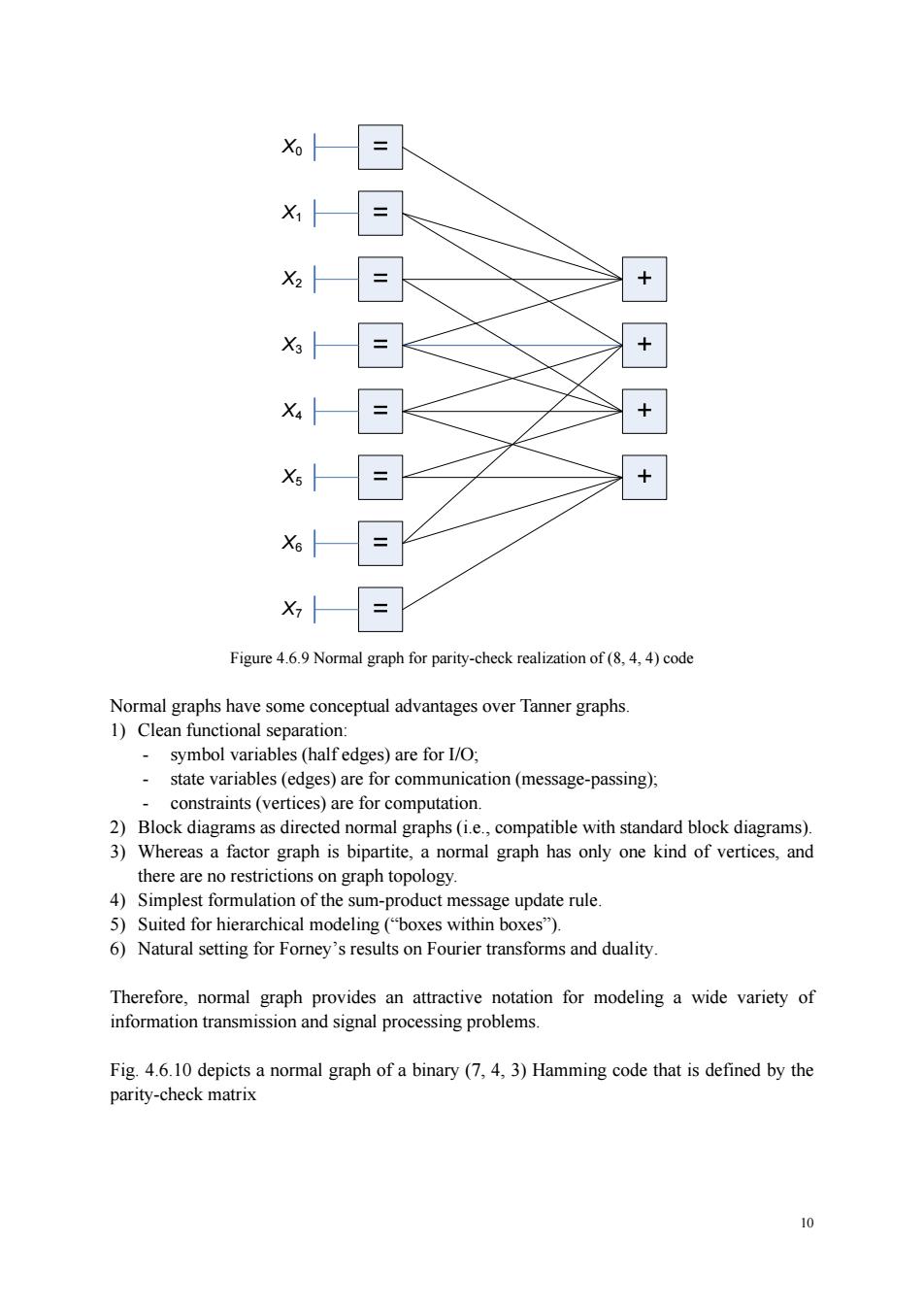正在加载图片...

= = + Figure 9 Normal graph for parity-check realization of (8)code Normal graphs have some conceptual advantages over Tanner graphs 1)Clean functional separation: symbol variables (half edges)are for I/O; 、 state variables(edges)are for communication(message-passing): straints(vertic 3)Whereas a factor graph is bipartite,a normal graph has only one kind of vertices,and there are no restrictions on graph topology. 4)Simplest formulation of the sum-product message update rule. 5)Suited for hierarchical modeling("boxes within boxes"). 6)Natural setting for Forey's results on Fourier transforms and duality Therefore,normal graph provides an attractive notation for modeling a wide variety of information transmission and signal processing problems. Fig 4.6.10 depicts a normal graph of a binary(7.4.3)Hamming code that is defined by the parity-check matrix10 X0 X1 X2 X3 X4 X5 X6 X7 Figure 4.6.9 Normal graph for parity-check realization of (8, 4, 4) code Normal graphs have some conceptual advantages over Tanner graphs. 1) Clean functional separation: - symbol variables (half edges) are for I/O; - state variables (edges) are for communication (message-passing); - constraints (vertices) are for computation. 2) Block diagrams as directed normal graphs (i.e., compatible with standard block diagrams). 3) Whereas a factor graph is bipartite, a normal graph has only one kind of vertices, and there are no restrictions on graph topology. 4) Simplest formulation of the sum-product message update rule. 5) Suited for hierarchical modeling (“boxes within boxes”). 6) Natural setting for Forney’s results on Fourier transforms and duality. Therefore, normal graph provides an attractive notation for modeling a wide variety of information transmission and signal processing problems. Fig. 4.6.10 depicts a normal graph of a binary (7, 4, 3) Hamming code that is defined by the parity-check matrix